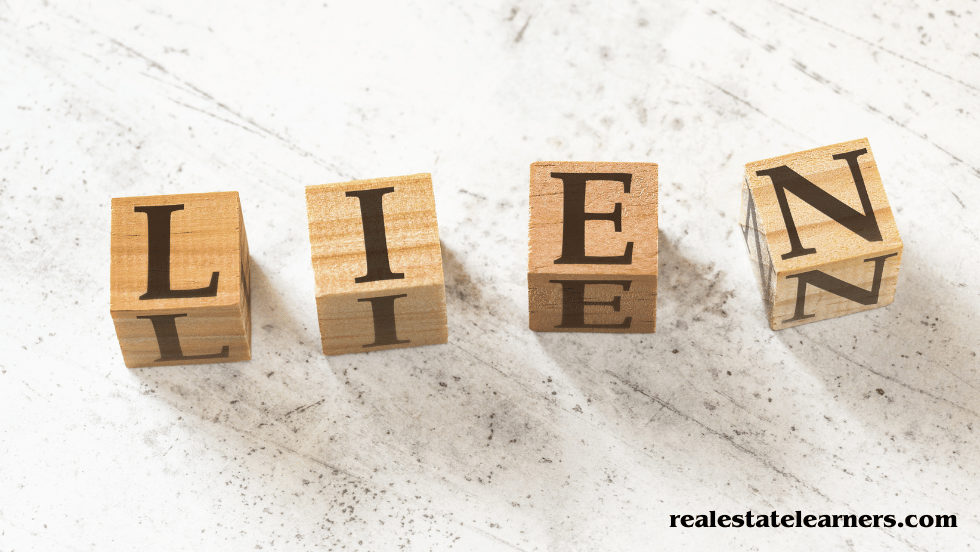A lien is a legal claim or encumbrance on a property that serves as security for paying a debt or obligation.In more straightforward language, this means that if you don’t meet your financial obligations, someone has the right to take ownership of your property.
. In this post we will talk about what a lien is, how it works, and the different types of liens.
What does a lien on a house mean?
As mentioned above, a lien is a legal claim against a property. This means that if you cannot pay off your debts or fulfill your obligations towards someone, they can take possession of your property as compensation. Liens are most commonly associated with mortgages, where the lender has a lien on the property until the borrower fully pays off the loan. However, other types of liens can be placed on a property for various reasons.
Examples of liens on properties include tax liens, mechanic’s liens, and judgment liens. These are placed on property by government entities or individuals who have provided services or goods that have yet to be paid for. Liens can also be placed due to court orders, such as in divorce cases where one spouse is ordered to pay the other a certain amount.
How Does a Lien Work?
When a creditor places a lien on your property, it is recorded in public records and becomes part of its title. Anyone purchasing or selling the property will know the lien and its associated debt. If you fail to pay off your debts, the creditor can take legal action to foreclose on the property and claim ownership.
Voluntary Liens vs. Involuntary Liens
Different types of liens can be placed on a property, such as voluntary and involuntary. Voluntary liens are made by a contract between the debtor and creditor, while involuntary liens are imposed by law without the property owner’s consent.
Some common examples of voluntary liens include mortgages, car loans, and home equity lines of credit. In these cases, the property is collateral for the loan, giving the creditor a legal right to claim it if the debtor fails to make payments.
Involuntary liens, on the other hand, are usually imposed by court order or through government regulations. These include tax liens, mechanic’s liens, and judgment liens. Tax liens can be placed on a property by the government if the owner fails to pay their taxations,while mechanic’s liens are filed by contractors or suppliers who have not been paid for work done or materials provided for the property.
Who can put a lien on a property?
In most cases, a lien can be placed by anyone to who the property owner owes money. This includes individuals, businesses, and government agencies. However, to place a legal and valid lien on a property, specific procedures must be followed depending on the type of lien.
In addition to securing debt payments, liens can also affect the sale or transfer of a property. When a property has a lien, the owner can only sell or transfer the property after satisfying the debt first. This is because liens are public records and can be discovered during title searches.
However, not all liens have to be paid off before a property can be sold. In some cases, the proceeds from the property sale can be used to satisfy the lien. This is known as a “lien release.” For example, if a homeowner sells their house for $200,000 but still owes $150,000, the remaining amount can be used to pay off the mortgage and release the lien.
A lien on a house means that someone has a legal right over the property due to an unpaid debt or obligation.
What are the Types of Liens in Real Estate?
- Mortgage Lien:
- This type of lien is created when a borrower takes out a home loan and uses the property as collateral. The lender can foreclose on the property if the borrower fails to make mortgage payments.
- Property Tax Lien:
- A property tax lien is created when a homeowner fails to pay their property taxes. Subsequently, the government can impose a lien on the property. If the taxes remain unpaid, they can initiate foreclosure proceedings on the property.
- Mechanic’s Lien:
- This type of lien is created when a contractor or subcontractor performs work on a property but does not receive payment. They can then place a lien on the property as collateral for their services.
Judgment Lien:
A judgment lien is created when a court awards a financial judgment against a property owner. This can occur in unpaid debts, outstanding taxes, or other legal judgments.
HOA Lien:
If a homeowner fails to pay their dues or assessments to a homeowners’ association (HOA), the HOA may place a lien on the property as collateral for the unpaid fees.
IRS Tax Lien:
The Internal Revenue Service (IRS) may place a tax lien on a property if the homeowner fails to pay their federal income taxes. This gives the government a legal claim to the property to satisfy the outstanding tax debt.
Child Support Lien:
When a parent falls behind on child support payments, a lien can be placed on their property as collateral for the unpaid amount. This ensures that the owed child support is paid before any other debts or loans.
Vendee’s Lien:
A vendee’s lien is created to protect buyers from developers. It allows the buyer to place a lien on the property if the seller does not fulfill the development that was promised in the purchase contract.
Attachment Lien:
An attachment lien is created when a creditor obtains a court order to seize and hold the debtor’s property until the debt is paid. This type of lien can be placed on any personal or real property the debtor owns, including bank accounts, vehicles, and real estate. An attachment lien aims to ensure that the debtor does not transfer or sell their assets to avoid paying their debt. Once the debtor pays off their debt, the attachment lien is lifted, and the property is returned to them.
Bail Bond Lien:
A bail bond lien is a form of lien that is placed on a property when the owner utilizes it as collateral to secure a bail bond for a defendant. If the defendant fails to appear in court or breaches the conditions of their release, the court possesses the authority to seize and sell the property to cover the cost of the bail bond. This type of lien is used as security for bail bonds in criminal cases and is typically released once the defendant’s case has been resolved.
Municipal Utility Lien-
A municipal utility lien is placed on a property by a local government or municipality for unpaid utility bills, such as water, sewer, and garbage fees. These liens give the government the right to collect payment from the property owner to cover the outstanding utility bills. If left unpaid, the lien can eventually lead to foreclosure on the property.
General lien vs Specific lien
General lien:
A general lien gives the creditor the right to seize and hold all of the debtor’s property, not just a specific asset.
This type of lien is not limited to a particular debt or obligation but covers all debts the debtor owes.
Examples of general liens include tax liens, judgment liens, and mechanic’s liens.
General liens are typically obtained through a court order or legal proceeding, and the property can only be released once all debts are satisfied.
Specific lien:
A specific lien gives the creditor the right to seize and hold a particular asset or property as collateral for a typical debt or obligation.
This type of lien is limited to a certain amount and cannot exceed the value of the debt.
Examples of specific liens include mortgage liens, mechanic’s liens, and HOA liens.
Specific liens are usually created through a contract or agreement between the creditor and debtor and can only be released once the debt is paid off. Furthermore, if a property is sold, the lien will be transferred to the new owner and must be resolved before any subsequent property transfer.
Conclusion
After discussing the concept of property liens and the parties involved, it is clear that anyone who has a legal claim or right to a property can put a lien on it. This includes contractors, subcontractors, suppliers, and even government entities such as tax authorities.
However, certain requirements must be met before a lien can be placed on a property. These requirements may vary depending on the state or country in which the property is located.

Corey has over 15 years of experience as a real estate broker and educator. He is dedicated to providing valuable insights and guidance for those looking to enter the real estate industry.

